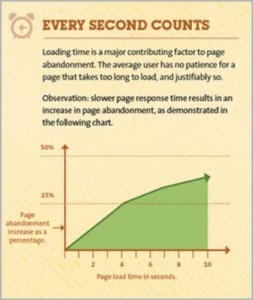Everywhere you look, there are statistics with reaffirm blogging as a popular and potentially lucrative past-time. Take the fact that companies that blog are known to receive 97% more links to their website, for example, or the assertion that blogs have become the fifth most trusted resource for accurate information online.
While these statistics underline the popularity of blogging and the potential benefits of this, however, they do little to determine best practice for writers. Whether you are attempting to sell products through a personal blog or create brand awareness through your content, you need to attend to the technical aspects of blogging if you are to succeed.
The Technical Aspects of Blogging: 3 Core elements to remember
So before you plunge headlong into the diverse and time-consuming art that is blogging, you will need to pay attention to everything from the length of your post to its structure and the nature of the content. Here are three things to keep in mind: –
There is no ideal length for a blog post
If you head online, you will see multiple posts advising you to write blog posts of variable lengths. While Seth Godin is renowned for penning short but compelling blog posts that feature less than 300 words, for example, there are statistics which suggest that content with more than 2,000 drives higher levels of traffic and engagement.
While this may be confusing to some, it should shine like a beacon of realization to others. After all, the reason why opinions vary so dramatically is that there is no optimal length for blog posts, with the nature of the content and its underlying purpose the core consideration when deciding how much to write.
In-depth and detailed posts (such as market analysis or tutorials) that boast an average of 2,000 words or more can be extremely engaging, so long as the content is insightful and capable of compelling the reader over the course of the piece. Similarly, short blog posts based on news releases can also be impactful, so the key is to understand the nature of what you are writing and its inspiration before using this as a rough template for the length of the content.
Having an understanding of your audience is also crucial, as busy professionals are more inclined to read shorter posts while those indulging in casual browsing interested in longer and insightful content. These factors should drive your approach to each individual post, although from a strategic perspective it may be worth developing an overview of your content and varying lengths where possible (between 300 and 2,000 words).
Pay Attention to structure, formatting and tense
We live in an age where society and its members are increasingly impatient, thanks primarily to the pace at which technology has evolved. When you consider that recruiters take just six seconds on average to review individual resumes, for example, there is little doubt that the need to make a quick and striking impression has never been more pressing. This is particularly relevant to blogging, which is a competitive niche and one that continues to grow on an annual basis.
Let’s use the example of a job seeker who is looking for advice on how to create an impactful resume. This type of individual is increasingly likely to visit reputable blogs to source this information, although the time-consuming and stressful nature of searching for work means that they have limited time to browse multiple pages at their leisure.
To reach this audience (or similar readers who are busy and pressed for time), you should look to avoid the use of long paragraphs and utilize bullet points where necessary. It is also beneficial to write in the present tense, as this lends the post a sense of urgency and makes the content seem more actionable for readers. The same principle can be applied to promotional content or posts that are intended as calls to action, as this type of copy needs to be concise and capable of funneling readers towards a direct act or behavior at the end.
In contrast, longer insight posts may well be used for research and can therefore be written in a more reflective tense that reflects the data included. While exceptionally long paragraphs should still be avoided where necessary, there is more scope for extended text when it adds value and explains a specific concept.
Consider the value Proposition when integrating multi-media
Another generic and widely recycled blogging tip advises writers to integrate multimedia content such as images and audio-visual material into their text. This is often advised regardless of whether such a move offers value or not, but this should be the core consideration when creating your blog post and presenting your content to readers.
The key is to avoid embedding stock photographs or uploading uninspiring videos to your blog post. While these may introduce a striking visual element they do not add tangible value to the content, so refrain from integrating multimedia elements unless they highlight a primary example of something you have referenced or reinforce a particular statistic.
You should also optimize the quality of multimedia integrated into your blog posts, as you focus on adding high resolution imagery and professional, fast-loading videos. On a similar note, you must always embed videos hosted on a universal site such as YouTube or Vimeo, as those uploaded directly may slow down the loading time of your blog’s landing page and force readers to seek out information elsewhere.
Digital & Social Articles on Business 2 Community(47)
Report Post






